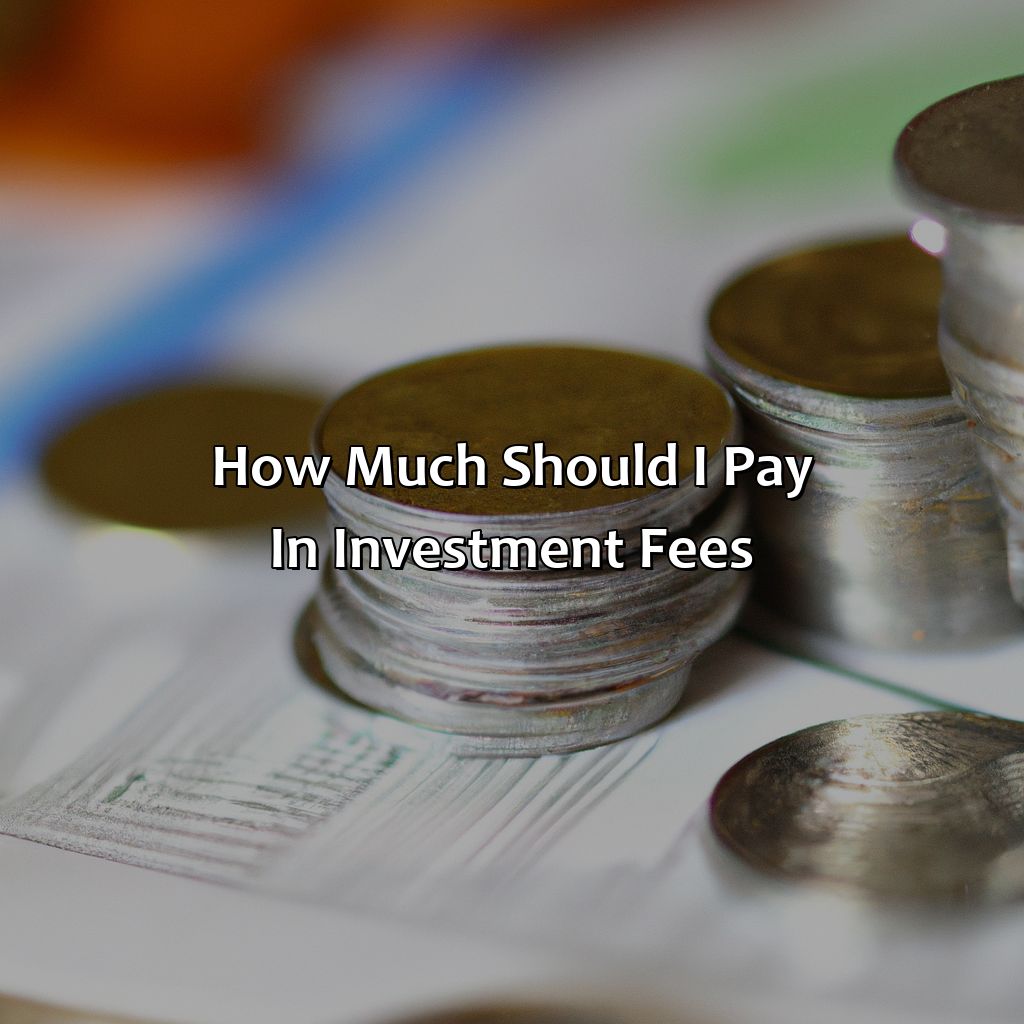How Much Should I Pay In Investment Fees?
Key Takeaway:
- Understanding Investment Fees: Investment fees are charges that investors pay to a financial professional or company for managing their investments. These fees can include account maintenance fees, brokerage fees, trading fees, and advisory fees.
- Factors Affecting Investment Fees: The type and size of investment, the investment professional’s experience, and the investment fee structure can all affect the investment fees. Investors should consider these factors when choosing a financial professional or investment company.
- How Much to Pay in Investment Fees: Industry standards and negotiating skills can help investors determine the appropriate amount to pay in investment fees. It’s also important to identify any hidden fees that may be charged by financial professionals or investment companies.
Are you concerned about the fees you’re paying for your investments? Don’t worry – this article will guide you through understanding the difference between good and bad fees, so you can make smarter decisions for your financial future. You’ll be a pro investor in no time!
Understanding Investment Fees
To grasp investment fees, let’s focus on what they are and the types. Dive into “Understanding Investment Fees” to learn more. Investment advisors charge various fees. Grasp the types of fees you’re charged to comprehend the effect on your portfolio returns.
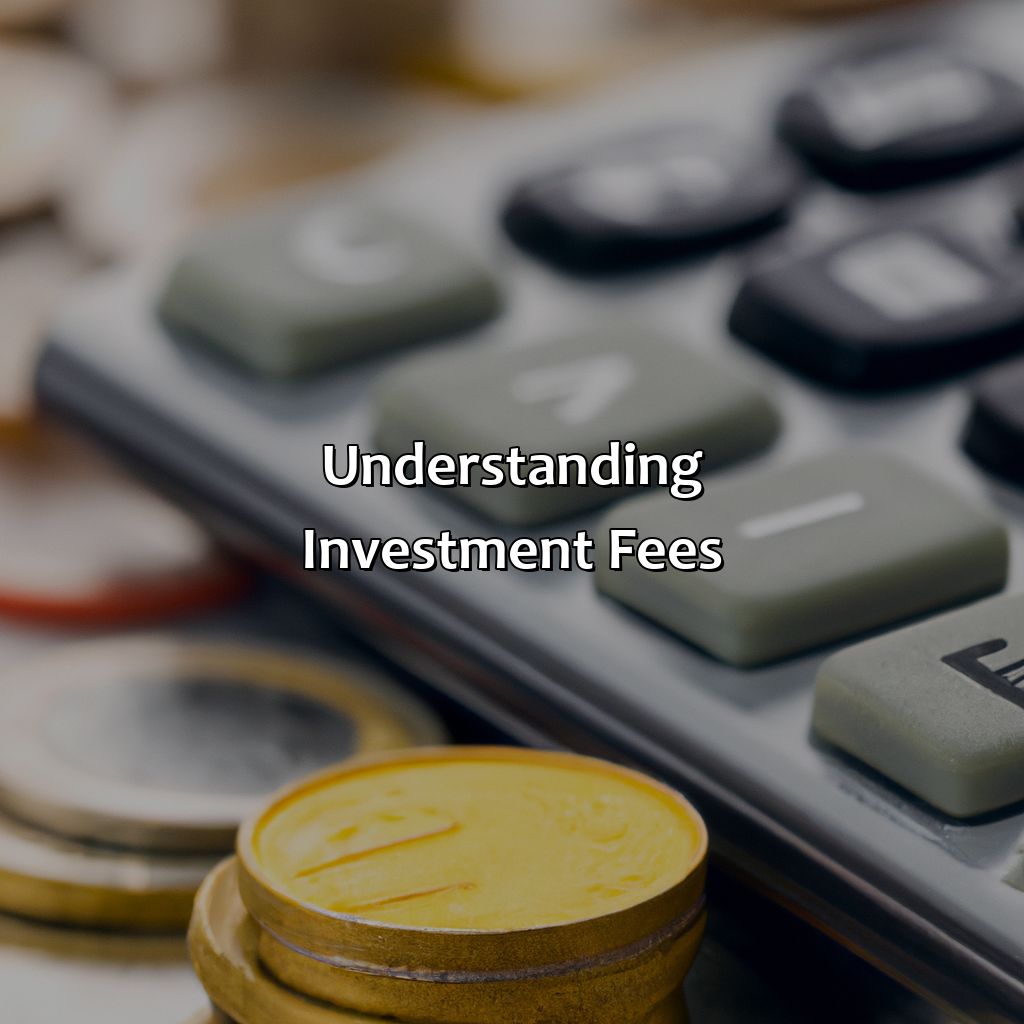
Image credits: retiregenz.com by Joel Woodhock
Definition of Investment Fees
Investment fees refer to charges imposed on an investor for managing their assets. These fees are often expressed as a percentage of the total amount invested, and can be charged upfront or periodically. It is crucial for investors to understand what they are paying for and how much they should be paying in investment fees.
Investment fees vary depending on the type of investment product, asset manager, and platform used. Common types of fees include management fees, performance fees, account maintenance fees, and transaction fees. Investors should carefully consider their investment goals before selecting an asset manager or investment product. They should also review the fee structure to ensure they are comfortable with the costs.
When calculating investment returns, investors must take into account the impact of investment fees on their overall returns. Even seemingly small differences in fees can have a significant impact on long-term returns. Some strategies that investors can use to reduce their investment expenses include negotiating lower fees, using low-cost index funds or exchange-traded funds (ETFs), and consolidating investments with a single provider.
Pro Tip: Before investing in any asset or product, it is important to read all disclosures thoroughly and ask any questions you may have about potential costs and risks involved. Understanding how much you are paying in investment fees can help you make more informed decisions when it comes to your financial future.
Understanding investment fees is like trying to navigate a maze blindfolded, but knowing the types of fees can at least give you a map.
Types of Investment Fees
Investment Fees Explained:
Investing can be a profitable journey, but understanding investment fees is crucial. Here is a breakdown of the different types of investment fees to help you make informed decisions.
| Type of Investment Fee | Description |
|---|---|
| Management Fee | A fee charged by a mutual fund or exchange-traded fund (ETF) to cover the cost of managing the investment portfolio. |
| Expense Ratio | The percentage of assets deducted annually from a mutual fund or ETF for operating expenses. |
| Front-End Load | A fee charged by some mutual funds when purchasing shares, often as a percentage of the initial investment. |
| Back-End Load | A fee charged by some mutual funds when redeeming shares, often as a percentage of the value being redeemed. |
| Transaction Fee | A fee charged each time you buy or sell an investment, often associated with brokerages or robo-advisors. |
Remember that fees vary among financial institutions and products offered. It is important to research and compare before investing.
Understanding these types of investment fees can help maximize your returns while minimizing costs. Don’t let high fees deter you from investing in your future.
Start investing today and secure your financial future!
Unfortunately, the only factor that doesn’t affect investment fees is wishing upon a shooting star.
Factors Affecting Investment Fees
Gauging the amount of investment fees you ought to pay is significant. Consequently, take into account the various factors affecting it. Here’s a section,“Factors Affecting Investment Fees,” with subsections like:
- “Type of Investment”
- “Size of Investment”
- “Investment Professional’s Experience”
- “Investment Fees Structure”
It will give you an in-depth look at which factors you need to consider when paying investment fees.
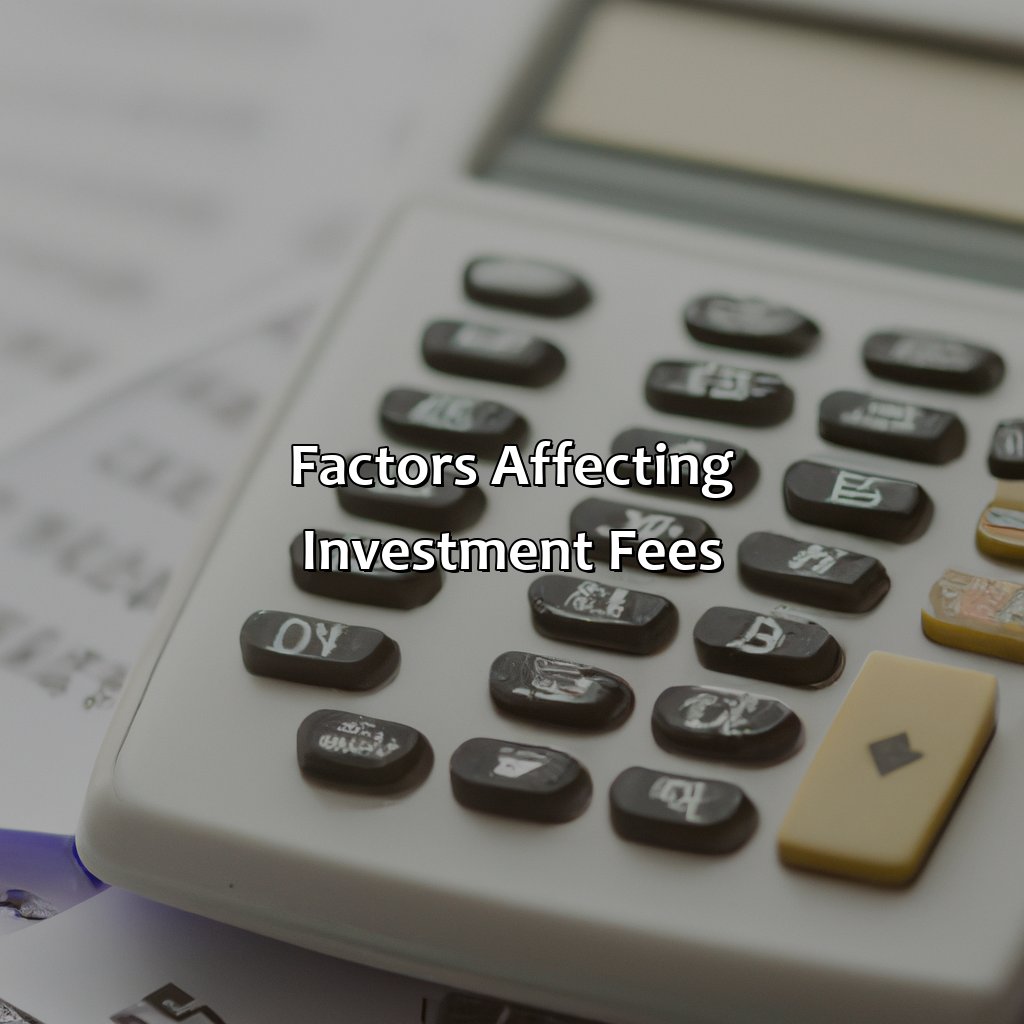
Image credits: retiregenz.com by James Washington
Type of Investment
Various forms of investments require different fees to be paid. Here, we will describe the impact of investment type on the amount of fees charged.
| Investment Type | Typical Fees Charged |
|---|---|
| Mutual Funds | Expense Ratios, Sales Charges, Transaction Fees |
| Exchange-Traded Funds (ETFs) | Expense Ratios, Commission Costs |
| Bonds and Fixed Income Securities | Commission Costs, Markup and Mark down costs |
| Savings Accounts and Certificates of Deposit (CDs) | No Management Fee but low-interest rates could make for a poor return on Investment |
These types of investments differ significantly in the fees they charge. When investing in mutual funds or exchange-traded funds (ETFs), investors are responsible for paying expense ratios based on their investment’s total value. Mutual funds also charge sales charges and transaction fees, while ETFs charge commission costs. For bonds and fixed income securities, commissions are usually charged as well as markup and markdown costs. However, when investing in savings accounts or certificates of deposit (CDs), investors may not be charged management fees but might have lower interest rates leading to poor returns.
Investing can be complex and understanding how different types of investments affect fee structures can help you better manage your financial future. Go big or go home? More like go big and prepare to pay the price in investment fees.
Size of Investment
Investment allocation impacts investment fees. The larger the investments, the greater the total fees paid to advisers, money managers and brokers. Smaller investments may have a higher percentage of fees deducted from returns, which could lower your ROI. Additionally, certain investment types require a minimum balance to qualify for lower fees or special services. Institutional investors who invest large-scale funds can negotiate lower investment fees due to economies of scale.
Considering all these factors, it is important to create an investment strategy that aligns with your financial goals and risk tolerance while minimizing unnecessary expenses.
Don’t miss out on optimizing your returns by understanding the impact of investment fees. Seek professional advice to ensure you’re choosing investments that are right for you and getting competitive investment terms and management fee structures based on your individual needs and goals.
An investment professional’s experience is like a fine wine, the older it is, the more expensive it gets. Just hope you don’t end up with a bottle of vinegar.
Investment Professional’s Experience
The expertise level of an investment professional is a crucial factor affecting investment fees. The higher the experience, the higher the fees may be charged by financial advisors, brokers or wealth management firms. Experienced professionals can often provide valuable insights and guidance to their clients, which can help investors make better-educated decisions. However, it comes at a cost, making it imperative for investors to understand their advisor’s level of experience before investing.
In addition to experience levels, other factors can also influence investment fees. These include investment account size, type of asset class invested in, and the type of fee structure followed by the advisor/firm. Some advisors charge hourly rates while others follow a commission-based model or use a percentage-of-assets-under-management (AUM) approach.
Investors must keep in mind that high fee charges do not always mean better returns. It is essential to focus on long-term growth goals and evaluate different options based on the total cost incurred due to management fees and other expenses involved in investing.
According to a report by CNBC, “An investor who pays 1% in expenses will forfeit over $400k over 40 years.”
Thus it’s important for investors to assess their risk tolerance and return expectations they seek while evaluating fee structures offered by professionals or firms.
Don’t get too attached to your money, the investment fees structure will break your heart.
Investment Fees Structure
Investment fees are crucial for any investor, as they can greatly influence the returns on investment. The pricing structure of investment fees depends on various factors like the type of investment, investment goals, commission structure, and account balance.
For a better understanding of the Investment Fees Structure, Table 1 summarizes some of the common types of charges associated with investment accounts. It includes expense ratios, load fees, annual advisory fees, transaction fees, and custodian fees. These fees vary depending on asset allocation preferences and individual portfolios.
| Type of Charges | Definition | Percentage or Amount |
|---|---|---|
| Expense Ratio | Annual fee charged by mutual fund companies for managing funds | 0.5% – 2% |
| Load Fees | One-time fee for buying or selling shares | Up to 5.75% |
| Annual Advisory Fees | Yearly fee paid to advisory firms for financial guidance | Around 1% Assets under management (AUM) |
| Transaction Fees | Charged per trade executed such as buying or selling securities | $4 – $20 |
| Custodian Fees | Yearly fee charged by banks or brokerage firms to hold assets | Up to $100 |
Apart from these aforementioned types of charges, location-based tax regulations and market conditions may also affect investment fees.
Investors should understand the applicable fee structure before committing their assets because it directly influences their portfolio’s performance results.
It’s essential to compare various options available in the market before making a final decision on optimizing profits through minimizing costs. Therefore investors must study different aspects that concern their investments carefully.
Investing involves taking risks but being unaware could lead to wrong decisions resulting in losses instead of profit. So do not miss out on learning about Investment Fees Structures and risk falling behind without meeting your financial objectives.
Calculating investment fees is like solving a Rubik’s cube, but with more money at stake.
How to Calculate Investment Fees
To work out the best investment fees for you, check out the different kinds. These are:
- Flat fees,
- Percentage-based fees,
- Hourly fees,
- and a mix of fees.
Each one has pros and cons. Knowing them can help you make great decisions about your investments.
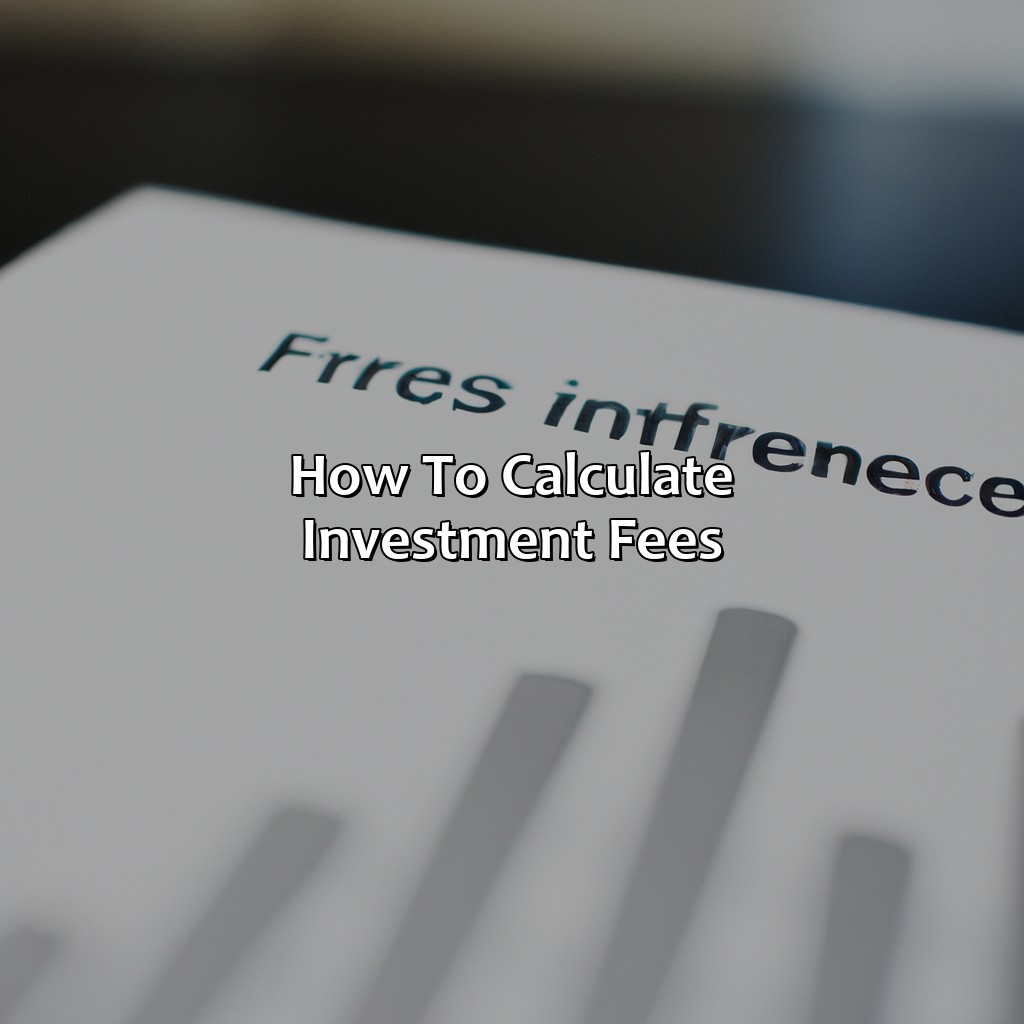
Image credits: retiregenz.com by David Woodhock
Flat Fees
A fixed rate given for investment management services is referred to as the ‘Level Fee.’ The client pays a fixed fee regardless of the amount they invest. This type of fee structure is becoming increasingly common, particularly for robo-advisors.
This kind of equitable distribution promotes low costs and transparency and provides clients the peace of mind that they are receiving equal treatment as other investors.
Unlike percentage-based fees, which increase as portfolio size increases, the flat fee model does not discriminate against small accounts.
Don’t miss out on cost-effective investment opportunities by not exploring the possibility of flat fees with your financial advisor. It could be a game changer for your investments in the long run.
Unfortunately, the only thing certain about percentage-based investment fees is that they’ll make your wallet lose weight faster than a crash diet.
Percentage-Based Fees
Charging fees based on a percentage of the investment amount is a common practice in the finance industry. The fee usually ranges from 0.25% to 2%, depending on the type of investment and the level of service provided by the financial advisor or asset management company.
This type of pricing model tends to benefit investors with larger portfolios since they pay more in absolute terms, but a lower percentage compared to those with smaller portfolios. However, it’s essential to keep an eye on the fees as they can quickly add up over time.
One way to mitigate this risk is to opt for flat-fee structures that don’t depend on the size or performance of your portfolio. These options may include robo-advisors or discount brokers.
While percentage-based fees might seem reasonable, investors should always scrutinize them before making any commitments to avoid getting caught off guard by hidden charges.
I recently spoke with a friend who was investing for the first time and didn’t realize that her financial advisor was charging her a percentage-based fee until she saw how much had been deducted from her account after a few months. She quickly realized that she could save money by opting for index funds and lower-cost brokerage services instead.
If you’re paying hourly fees for investment advice, just make sure your advisor isn’t also on a coffee break for half of that hour.
Hourly Fees
Investment Fees Calculated by the Hour
When choosing an investment manager, it’s important to consider whether they charge by the hour. Hourly fees are often charged for specific services such as financial planning or portfolio review and can vary depending on the complexity of your investments.
It’s important to weigh the benefits against the cost when considering hourly fees. If your portfolio is relatively simple, it may not be worth paying a high hourly fee for a professional’s opinion. However, if your investments are more complicated or you have a complex financial situation, an hourly fee may be a worthwhile investment.
Remember that hourly fees are just one component of investment fees. Be sure to consider all costs including management, account maintenance, and transaction fees to get a complete picture of what you will pay in total.
Don’t miss out on optimizing your investing strategies because you’re afraid of investment fees. Make informed decisions and take advantage of professional advice when necessary to secure long-term success.
Combining investment fees is like mixing different sauces – it may taste good at first, but you’ll regret it when you’re stuck with the bill.
Combination of Fees
Combining Different Types of Costs
Investment fees consist of various account expenses that include management costs, custodian fees, and internal expenses. Understanding the Combination of Fees will allow investors to make informed decisions on their investment options.
- Administrative Expenses: These are fixed fees paid to an intermediary. They include transfer agent services, audit and legal expenses for compliance filing, trustee and fiduciary services.
- Custodial Fees: These cover record keeping, safekeeping, fund accounting and other transaction processing services.
- Management or Advisor Fees: The amount charged by a portfolio manager or advisor for their management service is typically calculated as a percentage of assets under management (AUM).
- Transaction/Brokerage Fees: This includes the cost associated with trading investments such as stocks, bonds or ETF’s.
In addition to them, Investment fees can also be charged on redemption or early redemption depending upon the contract terms.
A study shows that up to 80% of investors are unaware of the total amount they pay in investment fees each year. By considering all types of charges while calculating investment fees, investors can reduce low returns at the end of investment terms.
As an example, John invested X amount in an S&P 500 ETF with AT&T custodian service and incurred $5 worth transaction fee per trade he made without knowing about it during his first year of investment. The additional costs had lowered his overall investment return when he withdrew his savings at last.
Investment fees are like taxes – they’re necessary but that doesn’t mean you have to like them.
How Much Should You Pay in Investment Fees?
To figure out a fair amount to pay in investment fees, you must understand the industry standards and know how to negotiate for better rates. Plus, it is crucial to uncover any secret fees that could reduce your profits. In this section, “How Much Should You Pay in Investment Fees?”, we will study these solutions in the subsections of Industry Standards, Negotiating Investment Fees, and Identifying Hidden Fees.
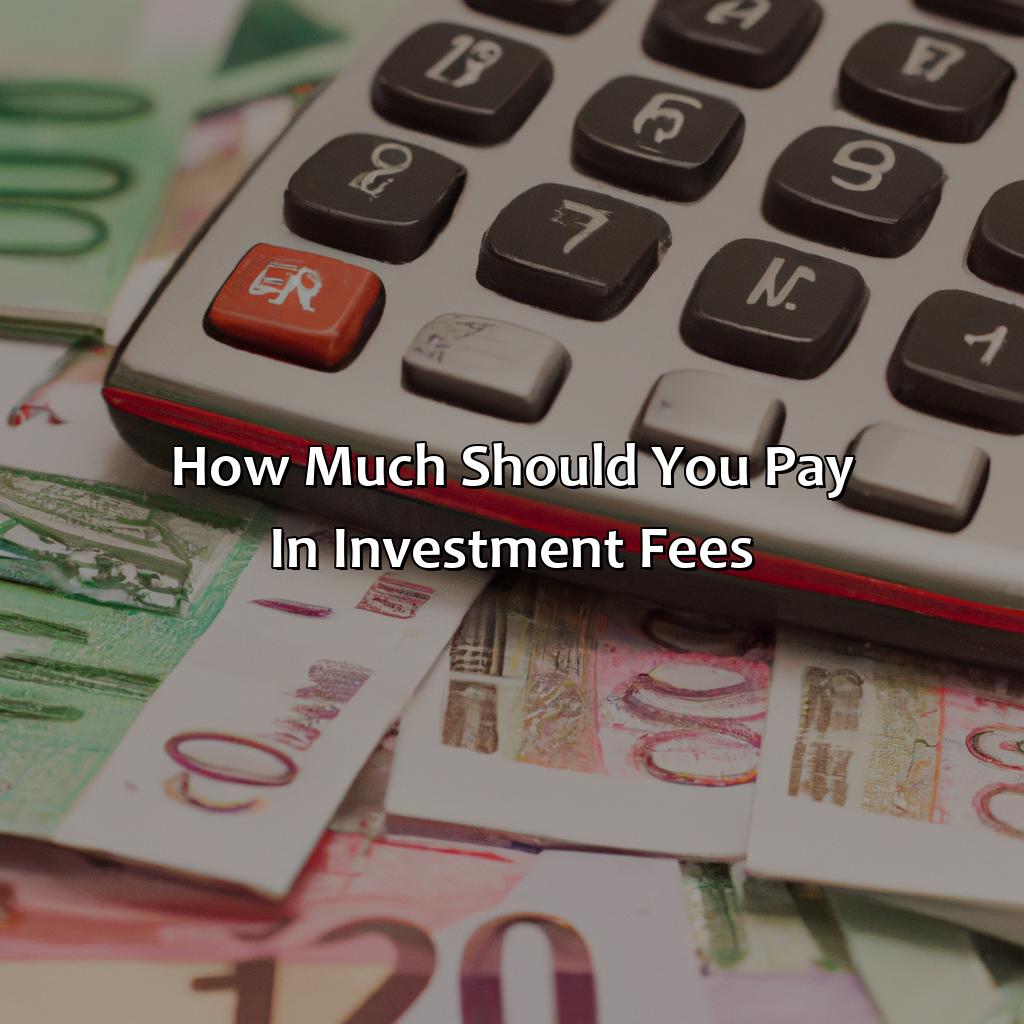
Image credits: retiregenz.com by Harry Duncun
Industry Standards
Investment Fee Payment Norms
As a proficient investor, it is essential to know the investment fee payment norms for long-term financial returns. Investment fees differ according to the investments you make, however; there are some industry standards that can give investors an insight into how much they should pay.
Investment Fees- What Do Experts Suggest?
Experts suggest that individuals should pay between 1%-2% of their total investment portfolio value for management fees yearly. The annual management fee includes asset management fees, which include account transfer and transaction charges. With an increase in the amount invested, more exemption is possible on these expenses. Therefore, considering your investable amount carefully can lead to better fee negotiation.
Allocating Funds with The Least Possible Fee
Individual investors seeking ways to keep expenses low might prefer a lower-cost investment portfolio. Investment companies now offer several exchange-traded funds (ETF) and mutual funds that provide low-cost fund alternatives. Robo-advisors are also an excellent option to help reduce fees since they offer automated algorithm-driven portfolio management systems at a competitive charge compared to traditional banking options.
Don’t Miss Out!
Remember, being proactive and knowing what you have set up for payment in terms of investment fees is one critical way of protecting yourself from shelling out too much money unnecessarily when investing. Keep abreast of international market trends, seek advice from trusted advisors or industry professionals who can guide you on market conditions and aid in making informed investment decisions while bearing minimal fees possible! You’re not cheap, you’re just a skilled negotiator when it comes to investment fees.
Negotiating Investment Fees
Optimizing Investment Fees for Maximum Returns
When it comes to investing, optimizing fees and charges can significantly impact your investment performance. The key to negotiating investment fees is understanding the costs associated with each service and what you’re willing to pay for them.
With a little research, you can identify alternative investment options, including exchange-traded funds (ETFs), that have lower fees. When discussing fees with an investment advisor or firm, be clear about your expectations and don’t be afraid to negotiate.
To find the best possible investment returns, keep in mind that cheap may not always mean better – it’s a balance between cost and value. Ensure transparency of all the charges before making any commitment.
Investment firms charge various fees for their services ranging from management expenses to advisory costs that are necessary as part of managing investments. According to The Wall Street Journal, an annual fee of 1% or less is considered reasonable for most investors.
If finding hidden fees was an Olympic sport, investment firms would win gold every time.
Identifying Hidden Fees
Without proper knowledge, identifying obscured charges in investment might pose a challenge. To avoid being taken advantage of by investment managers, you should learn how to look out for fees that are not explicitly stated. These charges include account maintenance fees, trading fees and custodian fees.
Custodian fees are charged by firms responsible for keeping custody of your investments. They may charge a fee for holding securities and other financial assets in your name or the name of the fund manager. Additional charges may apply when making partial withdrawals or complete disbursements.
It is essential to understand that some fund managers mask management fees by including them in other costs categorised as transactional expenses. In contrast, others may charge performance-related compensation based on returns generated from the investments they manage.
Do not assume that low-cost investment options imply an absence of hidden charges entirely. As such, ensure you scrutinize all the available information regarding any investment before committing to it fully.
By paying attention to hidden costs and actively monitoring your investments’ performance, you can take control of your finances and achieve long-term financial health.
Five Facts About How Much Should I Pay in Investment Fees:
- ✅ Investment fees can vary widely depending on the type of investment and the provider. (Source: NerdWallet)
- ✅ It’s important to know what you’re paying in fees, as they can have a significant impact on your returns over time. (Source: Forbes)
- ✅ A common fee structure is a percentage of assets under management, which can range from 0.25%-2%. (Source: Schwab)
- ✅ Some investments, like index funds, have lower fees than actively managed funds. (Source: Investopedia)
- ✅ Some providers offer fee waivers or reduced fees based on factors like account balance or investment strategy. (Source: The Balance)
FAQs about How Much Should I Pay In Investment Fees?
How much should I expect to pay in investment fees?
Investment fees can vary widely based on the type of investment and the fee structure of the investment provider. Generally, fees can range from less than 0.25% to over 2% per year. It is important to carefully review the fee structure and understand the impact on your investment returns.
What are the different types of investment fees?
There are several types of investment fees including management fees, advisory fees, transaction fees, and performance-based fees. Management and advisory fees are usually charged as a percentage of the assets under management, while transaction fees are charged for buying and selling securities. Performance-based fees are calculated based on how the investment outperforms a benchmark.
How do investment fees impact my returns?
The impact of investment fees on returns can be significant, especially over the long term. High fees can erode your returns and reduce the amount of money you have available for retirement or other financial goals. It is important to consider fees when selecting investments and to choose investments with lower costs when possible.
What should I look for when reviewing investment fees?
When reviewing investment fees, look for the total fees including all management, advisory, and transaction fees. Also, consider the impact of fees on your investment returns over time. Some investments may have higher fees but provide better returns, so it is important to consider the overall value of the investment.
Can I negotiate investment fees?
Some investment providers may be willing to negotiate fees, especially for larger investments. However, this is not always the case and investors should not expect to be able to negotiate fees in all situations. It is important to review the fee structure and understand the impact on returns before making investment decisions.
How can I minimize investment fees?
There are several ways to minimize investment fees, including choosing investments with lower fees, investing in index funds, and working with an investment provider that offers lower cost options. It is also important to review the fee structure regularly and make adjustments as needed to ensure fees are not impacting returns unnecessarily.
